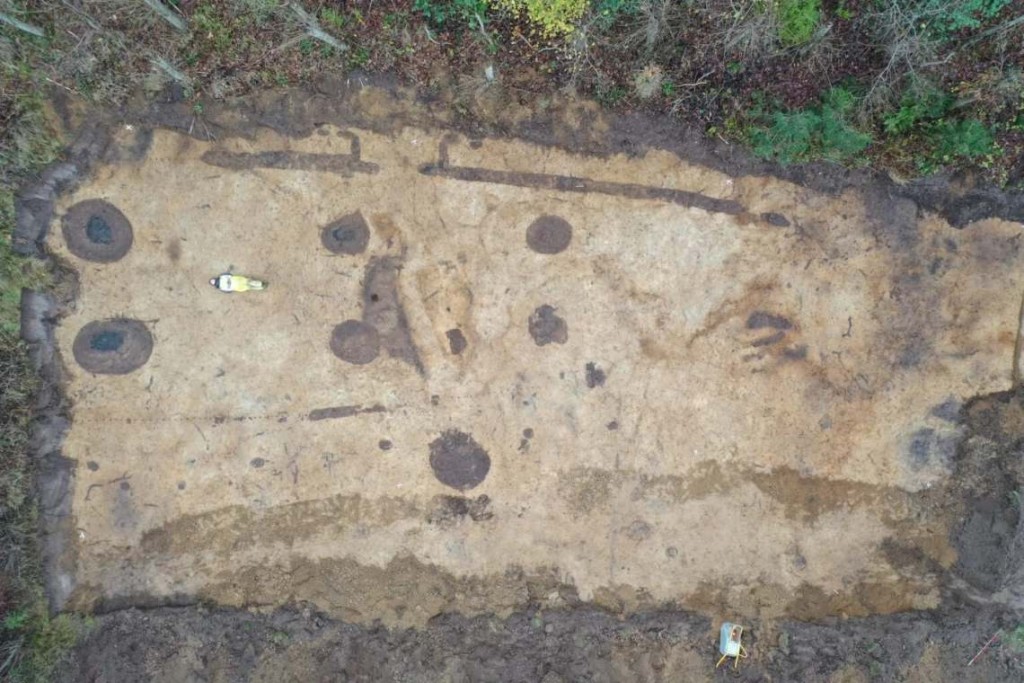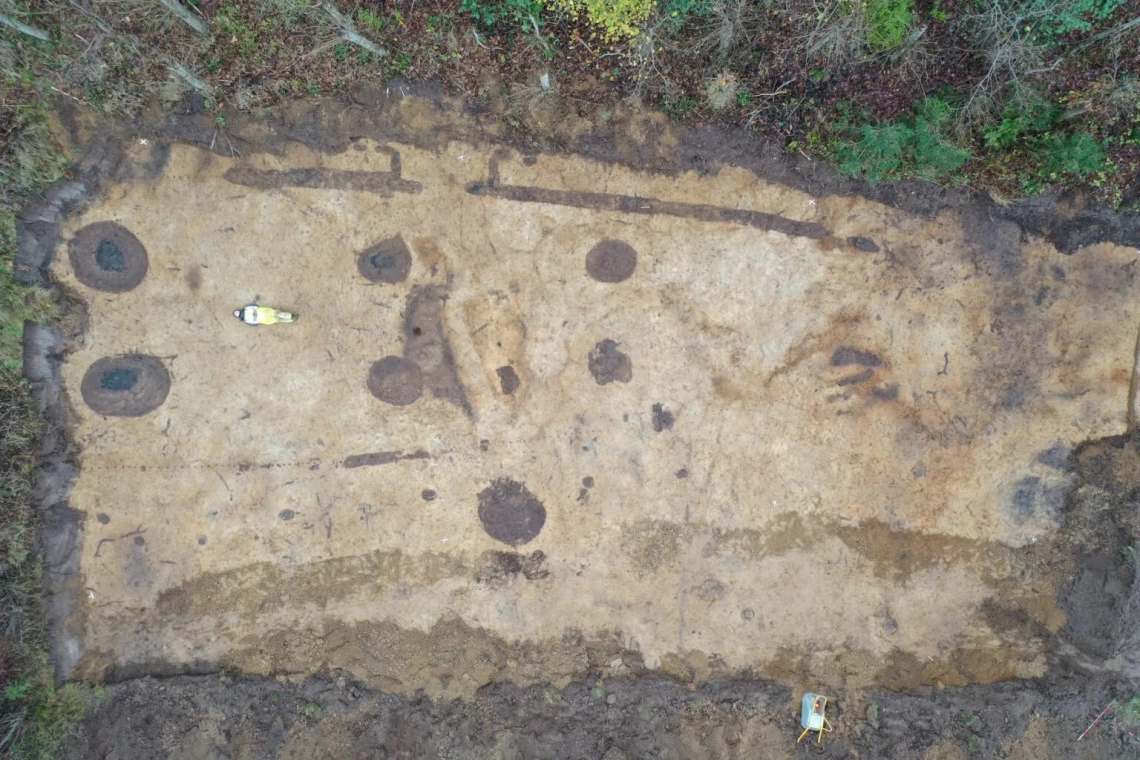
Archaeologists working in Denmark’s Jutland peninsula have discovered the foundation and remains of a great hall from the high Viking Age.
Structural features and remains date to between the late-9th to 11th century, but mostly from the era of Denmark’s king Harald Blåtand Gormsson, known colloquially as Harald “Bluetooth” from which the modern technology derives its name.
The archaeologists from the Historical Museum of Northern Jutland have little doubt that the hall would have played a monumental role in day-to-day life. It would have almost certainly been a political seat, as well as the center of get-togethers for all manner of reasons.
“This is the largest Viking Age find of this nature in more than ten years, and we have not seen anything like it before here in North Jutland, even though it has only been partially excavated,” archaeologist and excavation leader Thomas Rune Knudsen said in a statement.
“We only had the opportunity to excavate part of the hall, but there are probably several houses hidden under the mulch to the east. A hall building of this nature rarely stands alone.”
In its design, the long hall is reminiscent of the houses found at Harald Blåtand’s ring castles, which include Fyrkat at Hobro and Aggersborg at Aggersund. It is around 130 feet (40 meters) long and 32 feet (8-10 meters) long. Ten or possibly twelve rectangular oak posts would have securely held up the roof.
SIMILAR: 2 Viking Swords Buried Upright May Have Been a Guide to Odin and Valhalla – Discovered By Road Crew
The excavators noted that a lot more needs to be done to truly understand the place of this hall in the times of history in which it was erected, but a nearby runestone may offer a clue as to its former chieftain.
A wealthy landowner named Runulv den Rådsnilde is memorialized in a carved standing stone near to the site, and while it’s difficult to prove the hall belonged to him, “it’s certainly a possibility,” said the team.
MORE VIKING NEWS: Viking Age Shipyard Uncovered at Birka is Like Nothing Ever Found Before
It’s common even in journalism to call everything from the late 8th to 11th century from Scandinavia “Viking,” but Nordic writers closest to the time of the Viking Age used the word as an adverb—as in “he went that summer to go Viking in Northern France.”
In other words, it wasn’t a person, warrior, or profession, but more like a seasonal activity, and the word included all kinds of behavior such as raiding, trading, enslaving, or elisting as foreign mercenaries.
SHARE This Exciting Discovery With Your Viking-Loving Friends…





















Interesting that we’ve kind of been using the term, “viking” wrong in our cultural understanding! It’s always good to have a more accurate perception. And, can’t wait to see what they learn from the “hall”.
As with so many other people, the Vikings really kickstarted my interest in history. The Icelandic family sagas, of which I’ve read most of the large ones, really tell such an exquisite and lively narrative of live in that unqiue society, and links together so much of what archaeological evidence has turned up for us so far.